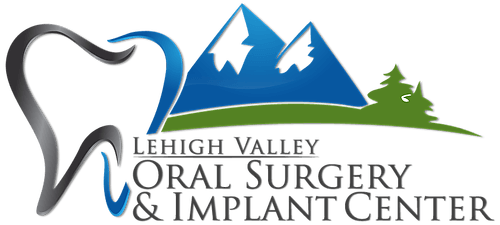How Dental Sedation Works in Bethlehem & Stroudsburg, PA
A Calm Path to Oral Surgery Near You
The idea of oral surgery can bring up many feelings, from nervousness to genuine fear. It’s completely normal to feel this way. The good news is, Lehigh Valley’s best oral surgeon offers a solution to these anxieties: dental sedation.
Dr. Chaudhry and our compassionate team understand these concerns deeply. We believe that every patient in Bethlehem, Stroudsburg, and surrounding areas like Allentown and Easton deserves a tranquil, comfortable experience. Ready to learn how we can make your oral surgery experience comfortable? Call us today at 484-821-1357 to schedule a consultation.
Why Choose Dr. Chaudhry’s Office for Local Sedation Dentistry?
Choosing an oral surgeon for your procedure is a significant decision. For residents of Bethlehem, Stroudsburg, and nearby communities, Dr. Chaudhry’s oral surgery office stands out for its commitment to patient-centric care and advanced sedation techniques.
Dr. Chaudhry is a highly trained oral and maxillofacial surgeon with a deep understanding of anesthesiology. His office provides a secure and comfortable environment for all procedures, from wisdom tooth extractions to complex dental implant placements.
Why Choose Sedation Dentistry for Oral Surgery Procedures?
For many, especially those with severe dental anxiety, the biggest obstacle to receiving necessary oral surgery is anxiety. Sedation for oral surgery addresses this directly by creating a calm and stress-free experience. Sedation dentistry has revolutionized how people perceive dental treatment, making it more accessible and less intimidating. Choosing sedation provides several key benefits:
- Reduced Anxiety and Relaxation: Sedation medications like nitrous oxide and IV sedation help to calm the nervous system, allowing for a state of deep relaxation and reduced anxiety.
- Enhanced Comfort: Sedation makes long or complex procedures more comfortable. Patients feel at ease and often have little to no memory of the procedure, which contributes to a more positive experience.
- Optimal Pain Management: While local anesthesia is used to numb the surgical area, sedation complements this by helping patients stay still and comfortable, ensuring a smooth and pain-free procedure.
- Improved Access to Care: For those who have avoided treatment due to fear, sedation options open the door to essential oral healthcare, enabling them to address their needs without emotional or physical distress.
The most common types of sedation in dentistry are nitrous oxide, oral conscious sedation, and IV sedation.
How Does Dental Sedation Work?
Nitrous Oxide
This is a form of inhaled sedation. The gas is delivered through a small mask worn over the nose. It works almost instantly, inducing a feeling of giddiness and relaxation. Nitrous oxide induces calmness and relaxation within three to five minutes. The effects are short-lived, allowing patients to recover quickly and even drive themselves home.
Oral Sedation
Administered as a pill taken before the procedure, this method works by depressing the central nervous system. The sedative medications create a state of profound calm and drowsiness. Oral conscious sedation involves taking prescription medication about an hour before a dental procedure. While you remain conscious, you will be very relaxed and may not remember the details of the procedure.
IV Sedation
IV dental sedation is delivered directly into the bloodstream through an intravenous line. IV sedation is administered through an IV line inserted into the patient’s arm. This method allows Dr. Chaudhry to precisely control the level of sedation throughout the procedure, including deep sedation if necessary. The medication induces a state of deep relaxation, where you are on the brink of sleep but can still respond to verbal cues.
General Anesthesia
For the most complicated cases, or for patients with specific needs, general anesthesia can be used. This method induces a state of complete unconsciousness, and the patient is fully asleep during the procedure. General anesthesia is used in oral surgery for longer or more complicated procedures and results in the patient being completely unconscious. This is administered and monitored by a skilled anesthesiologist.
The Sedation Dentistry Process
Comprehensive Health Assessment
Before any sedation is administered, our team conducts a thorough health assessment. This involves reviewing your complete medical history, including any medications you’re currently taking. This crucial step allows us to choose the most suitable sedation method and dosage for your specific needs, prioritizing your safety and comfort. If your sedation appointment is on a separate day, we will provide clear pre-appointment instructions to prepare you.
Sedation Administration
Once the right sedation method is chosen, Dr. Chaudhry will administer it. The timing and method of administration vary. For example, with oral sedation, you’ll likely take a pill or liquid at home before your appointment. For other options like nitrous oxide or IV sedation, the medication will be given once you are comfortably seated in our office.
Continuous Monitoring
Your safety is our top priority. Regardless of the sedation method used, our team will continuously monitor your vital signs, including blood pressure, heart rate, and oxygen levels, throughout the entire procedure. Patients receiving sedation for oral surgery are closely monitored for vital signs to ensure safety throughout the procedure. This vigilance ensures you remain stable and secure while sedated.
The Procedure
Once you are adequately sedated, Dr. Chaudhry can begin the necessary oral surgery. Thanks to the effects of the sedative, you will remain calm, comfortable, and relaxed throughout the procedure, with little to no awareness of the work being performed.
Relaxed Recovery
After the procedure is complete, we’ll guide you to a comfortable recovery area. Our team will continue to monitor you until you are alert and stable enough for discharge. While the effects of the sedation will gradually fade, you may feel drowsy or groggy for a few hours.
Post-Procedure Care
Before you leave, we’ll provide detailed post-sedation instructions to help with your recovery. A responsible adult must accompany you home, as the lingering effects of the sedation can make it unsafe to drive or operate machinery. We are always available to answer any questions you may have during your recovery.



